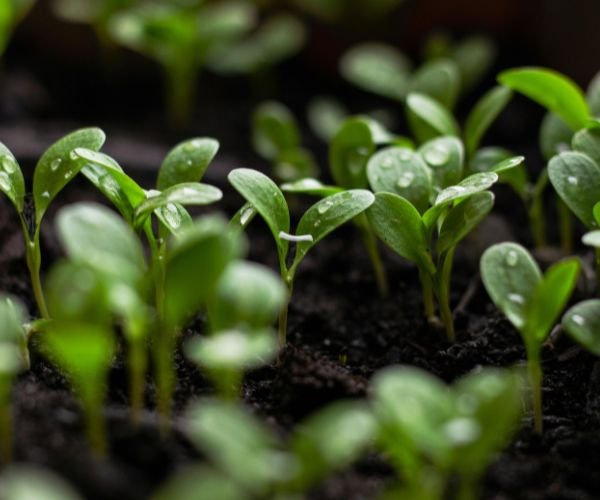Introduction: Why Use Potassium Fulvate in Liquid Fertilizers?
Potassium fulvate is a plant-derived, low-molecular-weight fraction of humic substances known for its excellent solubility, bioactivity, and compatibility with nutrients. In modern agriculture, potassium fulvate is widely used in liquid fertilizers, foliar sprays, and fertigation systems due to its ability to:
- Improve nutrient uptake and efficiency
- Stimulate plant metabolism
- Enhance root development and stress resistance
- Act as a chelating agent for micronutrients
However, its formulation into a stable, shelf-ready liquid fertilizer requires technical attention. In this guide, we’ll walk you through all the key considerations and best practices to help you formulate potassium fulvate-based liquid fertilizers like a pro.
1. Choose the Right Potassium Fulvate Raw Material
The first and most important step is raw material selection. Not all potassium fulvates are created equal.
Checklist for choosing high-quality potassium fulvate:
| Parameter | Recommended Specification |
|---|---|
| Appearance | Flakes, Powder or liquid |
| Solubility | > 95% in water |
| Fulvic Acid Content | > 50% (dry basis) |
| pH | 8–10 (for flakes or powder) |
| Ash Content | < 10% |
| Heavy Metals | Compliant with EU/FAO standards |
⚠️ Poor-quality fulvates can lead to sedimentation, clogging in drip systems, and poor performance in field conditions.
Pro Tip: Choose potassium fulvate extracted from leonardite or weathered coal with high fulvic acid content and tested for heavy metals and insolubles.
2. Understand Compatibility with Other Ingredients
Potassium fulvate is chemically active and may react with other nutrients, especially certain micronutrients or salts. Key compatibility concerns include:
Common Incompatibility Scenarios:
- Calcium (Ca²⁺): May react with fulvate to form white flocculent precipitates.
- Magnesium (Mg²⁺), Iron (Fe³⁺), Zinc (Zn²⁺): Can cause cloudiness or sediment if not chelated.
- Phosphates: Risk of precipitation, especially at pH > 7.5.
- Strong acids or alkalis: Degrades fulvic chains and reduces effectiveness.
Solutions:
- Use EDTA/DTPA-chelated micronutrients instead of inorganic salts.
- Adjust final pH to neutral range.
- Conduct small-scale jar tests before full mixing.
- Introduce fulvate in low-concentration premixes, then dilute.
💡 Some manufacturers also use compatibility stabilizers or emulsion systems to improve product clarity and shelf life.
3. Follow the Right Mixing Sequence
The order of addition during formulation plays a major role in ensuring a stable, homogeneous product.
Recommended mixing sequence:
- Start with clean water (RO or deionized preferred)
- Add macronutrients (urea, MAP, potassium nitrate, etc.)
- Stir thoroughly until fully dissolved
- Slowly add potassium fulvate under agitation
- Add micronutrients or biostimulants (if any)
- Adjust pH (if required)
- Add preservatives or anti-microbial agents
- Filter the solution before filling
⚠️ Never add potassium fulvate directly into concentrated acidic phosphate or calcium nitrate solutions. Always dilute first.
4. Control the pH for Stability and Activity
Potassium fulvate works best in neutral to slightly alkaline pH (6.0–8.5). Outside this range, risks include:
- Decomposition of fulvic chains at low pH (<5)
- Precipitation of salts or micronutrients
- Decreased plant absorption efficiency
Use organic acids (like citric acid) or buffer solutions to fine-tune pH if necessary. Always test the final formulation’s pH and stability under expected storage conditions.
5. Ensure Long-Term Shelf Stability
Even a good-looking product may fail over time due to microbial growth, crystallization, or phase separation.
Tips for improving stability:
- Add biocides/preservatives (e.g., isothiazolinones) for microbial control
- Filter through 80–120 mesh before packaging
- Use high-barrier packaging (HDPE or IBCs with UV protection)
- Store in cool, dry, and dark places
- Avoid storing near incompatible chemicals (acids, oxidizers)
Accelerated aging test: Place samples at 45°C for 10–14 days and observe color, precipitation, and odor changes to simulate 6 months+ of real-time storage.
6. Determine Proper Dosage and Application Rate
For most commercial liquid fertilizers, potassium fulvate concentration falls within:
- 2–10% w/w in concentrated product
- 0.1–0.5% dilution in field application (foliar or fertigation)
Higher concentrations improve efficacy but may reduce compatibility or shelf stability.
Typical Application Scenarios:
| Application | Dosage |
|---|---|
| Foliar spray | 200–500 mL/ha |
| Fertigation | 1–2 L/ha |
| Hydroponics | 0.05–0.1% solution |
7. Final Testing and Documentation
Before commercial production:
- Conduct jar tests and lab analysis (pH, EC, stability)
- Evaluate under low temperature (5°C) and high temperature (45°C) conditions
- Create batch records and technical specification sheets
Formulating liquid fertilizers with potassium fulvate offers numerous agronomic and commercial benefits — from improving nutrient efficiency to enhancing plant resistance. However, without the right formulation techniques, issues like precipitation, instability, or poor performance can arise.
By focusing on raw material quality, compatibility, pH control, mixing sequence, and storage stability, manufacturers can confidently create high-quality, stable, and effective liquid fertilizers tailored for today’s precision agriculture.
Want help developing your own potassium fulvate liquid formula?
At WELLYOU TECH, we provide high-quality potassium fulvate and technical support for customized fertilizer formulations.


